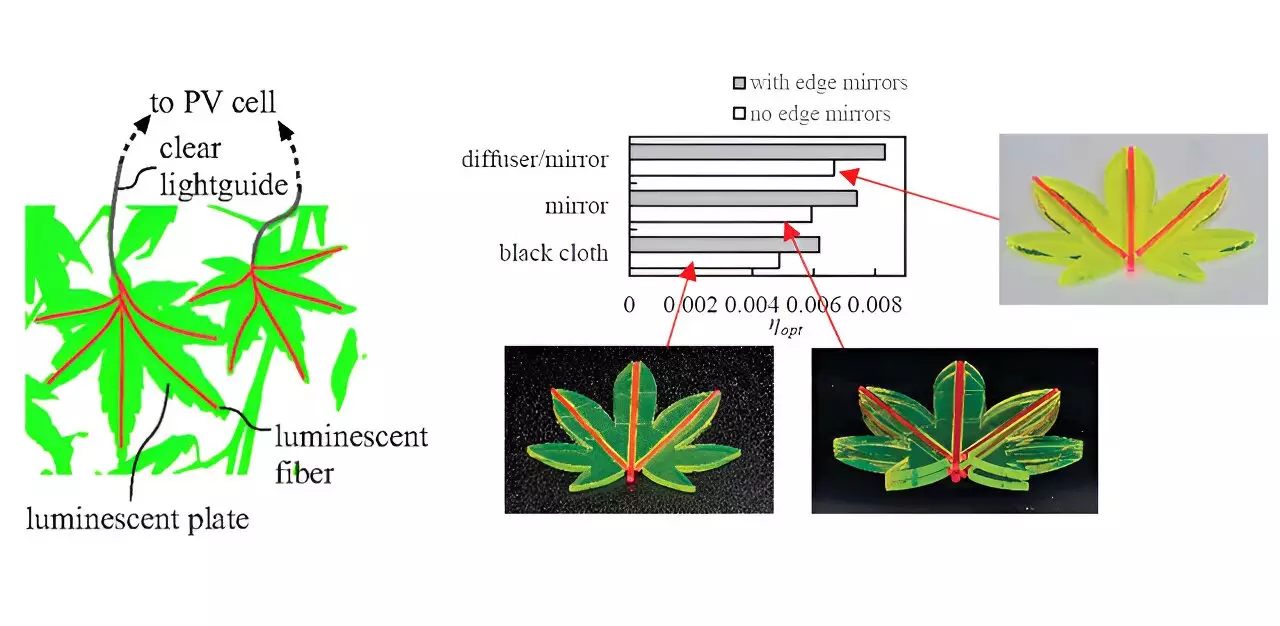Since the inception of solar energy technology in the 1970s, luminescent solar concentrators (LSCs) have emerged as a fascinating innovation aimed at improving the capture of solar energy. These devices utilize luminescent materials to absorb sunlight and then concentrate it onto photovoltaic (PV) cells, which convert this captured energy into electricity. Unlike conventional solar concentrators that depend heavily on mirrors and lenses to direct sunlight, LSCs offer the unique advantage of capturing diffuse light—an attribute that can be utilized effectively in various environments. Their versatility and aesthetic appeal render them particularly suitable for applications such as building-integrated photovoltaics (BIPV), where form and function merge seamlessly.
While the promise of LSC technology is substantial, it faces significant challenges, particularly when it comes to scaling these devices for larger applications. One major hurdle lies in the phenomenon of self-absorption of photoluminescent (PL) photons within the waveguide. This limits the efficiency of energy transfer from the luminescent materials to the PV cells, making large-scale deployment impractical. Overcoming these barriers has become a focal point for researchers focused on enhancing the viability of LSCs for commercial use.
The Leaf LSC Model: A Breakthrough Innovation
A team of researchers from Ritsumeikan University in Japan has introduced a groundbreaking approach to LSC technology through their proposed “leaf LSC” model. This innovative design seeks to mitigate the aforementioned scalability issues by reorganizing the luminescent materials into smaller, interconnected units that mimic the natural formation of leaves on a tree. As described in the Journal of Photonics for Energy (JPE), this leaf-inspired configuration consists of luminescent plates strategically arranged around a central luminescent fiber. By positioning the plates to face the fiber, the design enables the capture of incident photons and their transformation into PL photons effectively, allowing them to travel down the fiber to be harvested by a PV cell at its tip.
Enhancing Efficiency Through Modular Design
The modular aspect of the leaf LSC presents several compelling advantages. A notable improvement arises from the reduction in the lateral dimensions of individual modules—research shows that decreasing the side length of a square leaf LSC from 50mm to just 10mm results in a marked increase in photon collection efficiency. Such a modular approach not only boosts energy capture potential but also facilitates the replacement of any damaged units. Moreover, it allows for the seamless incorporation of advanced luminescent materials as they are developed over time, paving the way for continuous innovation in solar energy technology.
To maximize the operational efficiency of the leaf LSC, the researchers have also integrated traditional optical engineering techniques found in planar LSCs. This includes the use of edge mirrors and tandem structures that enhance light collection capabilities. The performance of these bio-inspired LSCs can be analytically evaluated based on the spectrum and intensity of the incident light, leading to fine-tuned designs that promise higher efficiencies. The findings, as highlighted by Sean Shaheen, an academic professional in engineering and physics and the Editor-in-Chief of the JPE, suggest a transformative leap in how luminescent solar concentrators can effectively harness sunlight for energy generation.
The innovations within the realm of leaf LSC technology position it as a potential game-changer for the solar energy landscape. By optimizing photon collection and introducing flexible, modular designs, these advancements could make solar concentrators significantly more efficient and versatile. This scalability opens the door for diverse applications across a spectrum of settings—from massive solar farms to sleek, integrated systems embedded within urban architecture. As research progresses, the future may see solar energy systems becoming increasingly refined, and their role in sustainable energy solutions more pronounced—an essential step toward a cleaner, renewable energy infrastructure.
The evolution of luminescent solar concentrators, particularly through the lens of innovative designs like the leaf LSC model, signifies a crucial advancement in making solar energy more accessible, efficient, and adaptable to various applications, ultimately driving the transition toward a more sustainable energy future.

